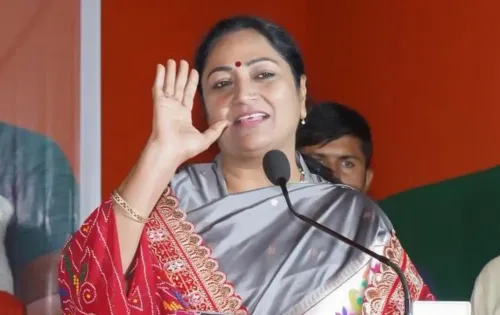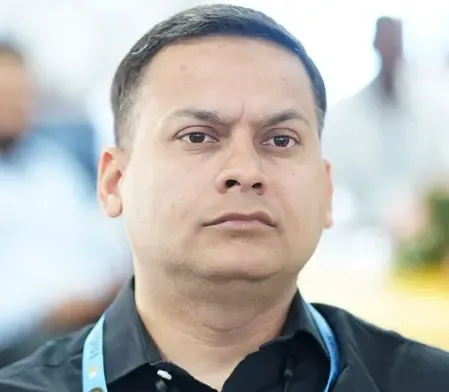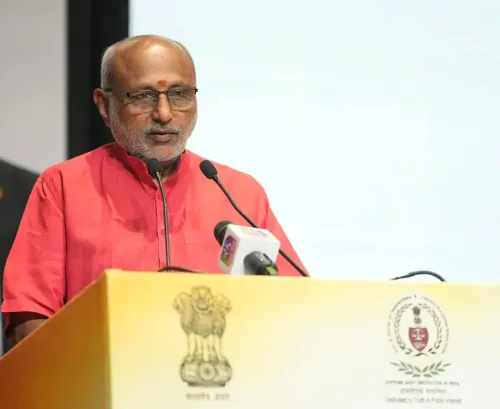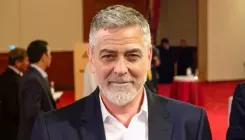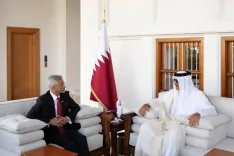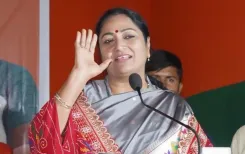Is FairPoint the educated faces behind Kashmir's terror network?
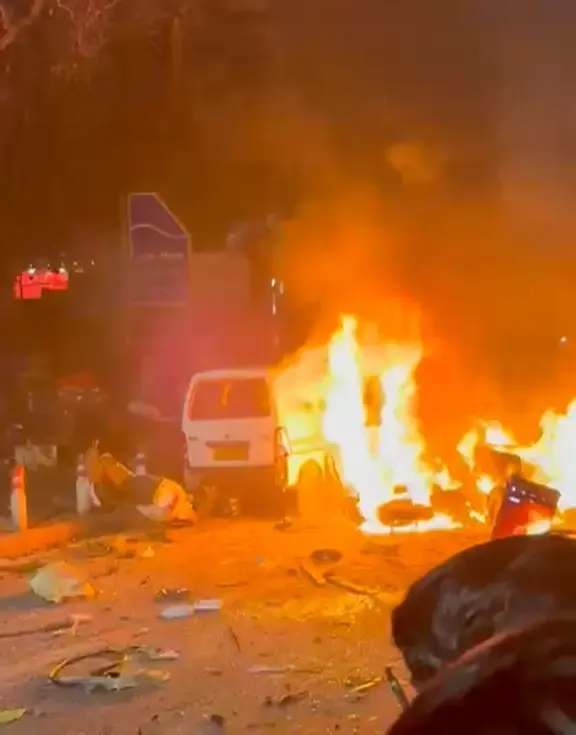
Synopsis
Key Takeaways
- Kashmir's terrorism is ideologically driven.
- Educated individuals often play a key role in enabling terror.
- Radicalisation is pervasive, affecting even affluent segments.
- The narrative of poverty as the root cause is misleading.
- Recent arrests indicate a troubling trend in radicalisation.
New Delhi, Nov 16 (NationPress) For years, a persistent myth has circulated regarding the tumultuous history of Kashmir, suggesting that the terrorism plaguing the Valley stems purely from poverty, lack of education, and exploitation. However, the truth is far more disturbing.
The terrorist ecosystem in Kashmir is not solely fueled by those in economic distress; it is also supported by individuals who have enjoyed privilege, education, and comfortable living conditions. Many of these individuals resided in spacious homes, owned land, and held a respected social status. Yet, they chose to contribute their knowledge, networks, and credibility to the terrorist machinery.
This unsettling reality was highlighted recently by the shocking discovery that various young Kashmiri doctors were implicated in a dark terror plot.
For many who were raised in the Valley and forced to flee due to years of targeted persecution, the involvement of such professionals came as no surprise. They had witnessed how radicalisation permeated every stratum of society, including the affluent and well-educated.
The origins of Kashmir's terrorism have never been rooted in socioeconomic hardship. Instead, it has always been ideological. From the time of Independence, the enduring aim of Pakistan-backed separatism has been the religious homogenisation of the region, ultimately seeking its unification with Pakistan. When this agenda faltered during wars in 1965, 1971, and 1999, Islamabad changed tactics. The proxy war initiated in 1988 primarily targeted Kashmiri Pandits first, forcing an entire community into exile. What was presented as an 'independence struggle' was actually a religious initiative to transform Kashmir into an Islamic territory aligned with Pakistan's unfulfilled 1947 vision.
The recent terror conspiracy uncovered in Faridabad, Haryana, once again lays bare this deeper ideological underpinning. The suspects were not mere foot soldiers but doctors—individuals from affluent Kashmiri families, boasting impressive educational credentials and comfortable lifestyles. They lived in large residences with gardens, earned lucrative incomes, spoke fluent English, and were tech-savvy professionals; one would assume they had no motivation to resort to violence. Yet, beneath that polished facade lay a chilling commitment. Their radicalisation was not a byproduct of deprivation; it was a matter of belief.
Names like Dr Umar Mohammad, Dr Muzaffar Ahmad, Dr Adeel Ahmad Rather, Dr Muzammil Shakeel, Dr Shaheen Saeed, Dr Mohammed Arif Mir, and Dr Farooq Ahmad Dar have emerged, and this list continues to expand.
Reports indicate that nearly 15 additional doctors may be involved in this new 'D-gang'. Previously, the only D-gang known in India was the terror-mafia network of Dawood Ibrahim, whose actions led to the devastating 1993 serial blasts in Mumbai and who has been sheltered in Pakistan ever since. Now, 32 years later, another D-gang emerges—this time not a mafia consortium but a cold-blooded doctors' terror syndicate.
The participation of these medical professionals is not an anomaly. The death of a suicide-bomber doctor and the arrests of other medical professionals demonstrate that successive governments at the Centre have chosen to ignore the fundamental reality: terrorism in Kashmir has never been about development, opportunity, or infrastructure. It is fundamentally a religious war—a jihad. And this is not the first instance where doctors, professionals, or government officials have been implicated in terrorist activities.
From the very inception of terrorism in the Valley, a significant segment of the educated Muslim class has been actively engaged. They have supported and facilitated the terror network's growth, unleashing violence against minorities—Hindus, Sikhs, and anyone perceived as pro-India. In the early 1990s, when Kashmiri Pandits were targeted, it was frequently the 'good neighbor,' a colleague, or even a friend who provided information about Hindu families to the terrorists.
Telecom engineer B.K. Ganjoo, brutally murdered in 1990 while hiding inside a drum at his home, might have survived had his security not vanished unexpectedly and had his neighbor not led the killers to his hiding spot. Girja Tickoo might not have endured gang rape for days and ultimately been killed on a saw machine if her own office colleagues had not been complicit in the plot. The terror enablers were educated individuals who personally knew the victims—yet they chose to betray them.
Doctors, in particular, have a troubling history within Kashmir's terror narrative. In the early years of militancy, numerous cases emerged of medical professionals refusing to treat Hindu victims of terror attacks—not out of fear, but out of solidarity with the separatist cause.
Dr Abdul Ahad Guru, a prominent surgeon in the 1980s, was a staunch supporter of the Jammu Kashmir Liberation Front (JKLF). He was known for his criticism of security forces and even acted as a communication channel between the government and terrorists. He is believed to have facilitated the release of the daughter of then Home Minister Mufti Sayeed in 1989.
One of the most disturbing incidents was the Shopian case of 2009. Two women, Asiya Jan and Neelofar Jan, were discovered dead, with initial post-mortem reports by two doctors, Bilal Ahmad and Nighat Shaheen, alleging rape and murder by security forces. The Valley erupted in unrest. For 42 days, life came to a standstill.
When the CBI investigated, it was revealed that the women had drowned and had neither been raped nor murdered. The doctors had fabricated evidence, tampered with biological samples, and deliberately misled the public to incite unrest. Dr Nighat even used her own vaginal swab and presented it as one of the victim's samples. When the bodies were exhumed, it was confirmed that no sexual assault had taken place. Fourteen years later, in June 2023, the Jammu & Kashmir administration finally dismissed the implicated doctors from service. The CBI chargesheet included not just doctors, but also lawyers and civilians, highlighting the extent of the conspiracy.
There have been instances where elites have been identified and appropriately punished. The current Lt. Governor, Manoj Sinha, has taken strong measures to identify hidden sympathisers and instigators. This includes Dr Syed Ghulam Jeelani (Kashmir University), an Assistant Professor dismissed for links with separatist networks in 2021; Dr Mushtaq Ahmad Rather, a Scientist at SKIMS, who was dismissed in 2021 under terrorism-related allegations. In 2017, Professor Muhammad Ashraf Mir, Assistant Professor at Pulwama Degree College, was arrested during violent protests. A Deputy Superintendent of Jail, Feroz Ahmad Lone, was arrested in 2021 for facilitating terrorists inside jail.
Then there is the shocking case of Dr Nisar ul Hassan, who was stationed in the Medicines Department of SMHS Hospital, Srinagar, and also served as president of the Doctors Association of Kashmir (DAK). He was dismissed by the Lt. Governor's administration on November 21, 2023, along with three other officials, for their terror links. This doctor was recruited by Al-Falah University, Faridabad, Haryana, and is said to be part of the D-Gang.
This pattern—of professionals weaponising their status and skills to further extremist goals—is not confined to isolated incidents. Over the years, numerous terror investigations have unveiled a tightly interwoven nexus of politicians, activists, doctors, lawyers, teachers, and even law enforcement officials.
The assumption that radicalisation is limited to the uneducated or economically disadvantaged does not withstand scrutiny. The Valley's conflict has consistently received its most critical support from the educated class, whose influence and networks have amplified its reach.
The recent arrests of Kashmiri doctors planning attacks far beyond the Valley highlight a sobering reality. Radicalisation in Kashmir is not a fringe phenomenon—it is deeply institutional, socially enabled, and often quietly endorsed.
The Faridabad case serves as a reminder that the conflict in Kashmir cannot be comprehended through simplistic narratives of poverty or deprivation. It is a complex, deeply ideological struggle—and until the nation acknowledges the extent to which radicalisation has infiltrated even the most privileged segments of Kashmiri society, the issue will remain painfully misunderstood.
The rot runs deep, and radicalisation remains a stark and uncomfortable truth.
(Deepika Bhan can be contacted at deepika.b@ians.in)

